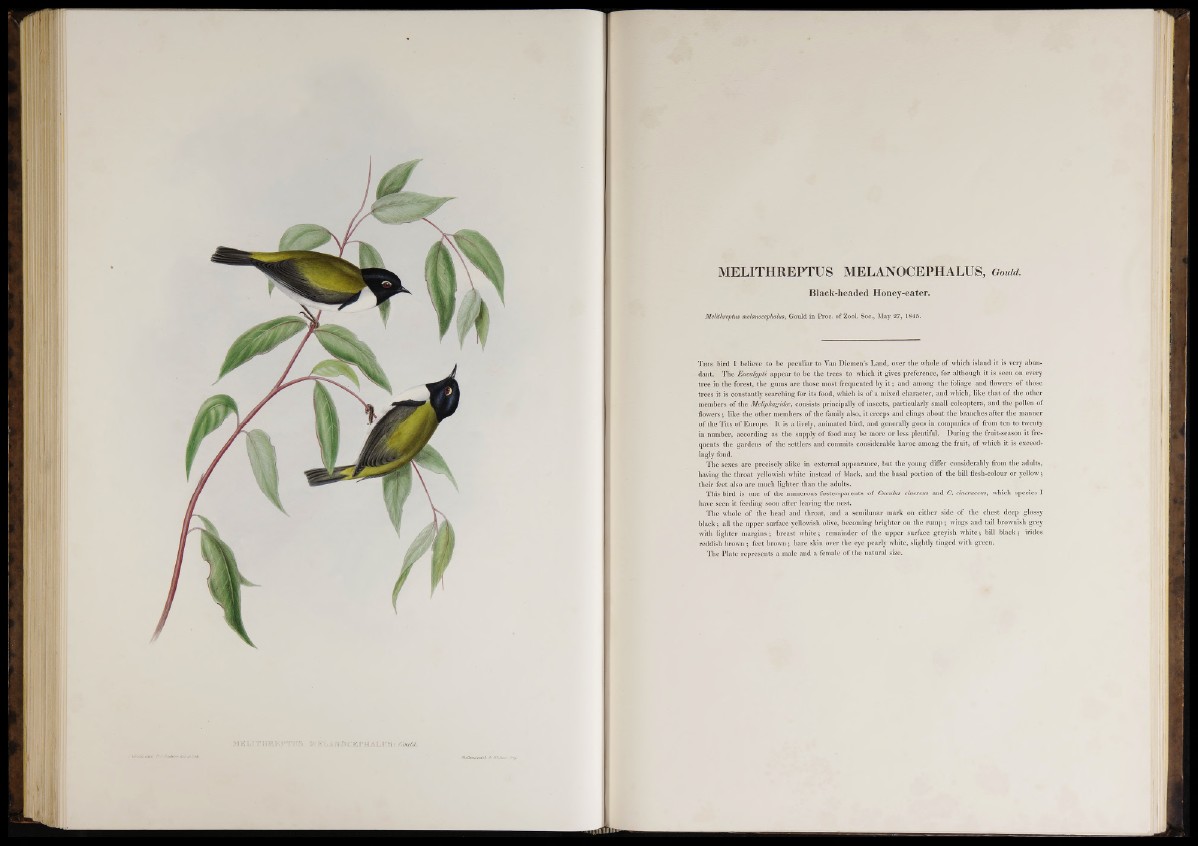
EM T ¡I3B 9 v rnT § M ELAJTOCJEPHALflJSS 6'aiU/l.
MELITHREPTUS MELANOCEPHALUS, Gould.
Black-headed Honey-eater.
Melithreptus melanocephahs, Gould in Proc. of Zool. Soc., May 27, 1845.
The Eucalypti appear to be the trees to which it gives preference, for although it is seen on every
T h is bird I believe to be peculiar to Van Diemen’s Land, over the whole of which island it is very abundant.
tree in the forest, the gums are those most frequented by i t ; and among the foliage and flowers of those
trees it is constantly searching for its food, which is of a mixed character, and which, like that o f the other
members of the Meliphagidce, consists principally of insects, particularly small coleóptera, and the pollen of
flowers; like the other members of the family also, it creeps and clings about the branches after the manner
of the Tits of Europe. It is a lively, animated bird, and generally goes in companies of from ten to twenty
in number, according as the supply o f food may be more or less plentiful. During the fruit-season it frequents
the gardens of the settlers and commits considerable havoc among the fruit, o f which it is exceedingly
fond.
The sexes are precisely alike in external appearance, hut the young differ considerably from the adults,
having the throat yellowish white instead of black, and the basal portion o f the bill flesh-colour or yellow;
their feet also are much lighter than the adults.
This bird is one of the numerous foster-parents of Cuculus cinereus and C. cineraceus, which species I
have seen it feeding soon after leaving the nest.
The whole of the head and throat, and a semilunar mark on either side of the chest deep glossy
black; all the upper surface yellowish olive, becoming brighter on the rump; wings and tail brownish grey
with lighter margins; breast white; remainder of the upper surface greyish white; bill black; irides
reddish brown ; feet brown; bare skin over the eye pearly white, slightly tinged with green.
The Plate represents a male and a female o f the natural size.